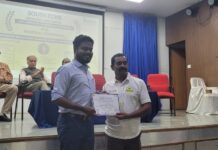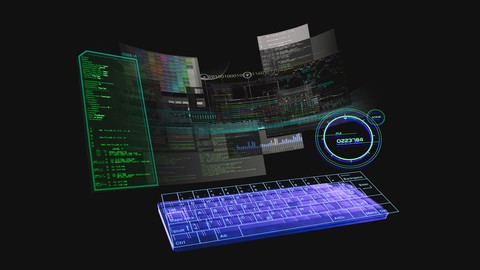If transistors can’t get smaller, then coders have to get smarter
In 1965, Intel co-founder Gordon Moore predicted that the number of transistors that could fit on a computer chip would grow exponentially — and they did, doubling about every two years. For half a century, Moore’s Law has endured: Computers have gotten smaller, faster, cheaper, and more efficient, enabling the rapid worldwide adoption of PCs, smartphones, high-speed internet, and more.

Important Announcement – EasyShiksha has now started Online Internship Program “Ab India Sikhega Ghar Se”

This miniaturization trend has led to silicon chips today that have almost unimaginably small circuitry. Transistors, the tiny switches that implement computer microprocessors, are so small that 1,000 of them laid end-to-end are no wider than a human hair. And for a long time, the smaller the transistors were, the faster they could switch. But today, we’re approaching the limit of how small transistors can get. As a result, over the past decade researchers have been scratching their heads to find other ways to improve performance so that the computer industry can continue to innovate. If transistors can’t get smaller, then coders have to get smarter.
While we wait for the maturation of new computing technologies like quantum, carbon nanotubes, or photonics (which may take a while), other approaches will be needed to get performance as Moore’s Law comes to an end. In a recent journal article published in Science, a team from MIT’s Computer Science and Artificial Intelligence Laboratory (CSAIL) identifies three key areas to prioritize to continue to deliver computing speed-ups: better software, new algorithms, and more streamlined hardware.
sc name=”eashyshikshamodules” ][/sc]
Top Courses in Software Engineering
More Courses With Certification
Senior author Charles E. Leiserson says that the performance benefits from miniaturization have been so great that, for decades, programmers have been able to prioritize making code-writing easier rather than making the code itself run faster. The inefficiency that this tendency introduces has been acceptable, because faster computer chips have always been able to pick up the slack. If transistors can’t get smaller, then coders have to get smarter.
“But nowadays, being able to make further advances in fields like machine learning, robotics, and virtual reality will require huge amounts of computational power that miniaturization can no longer provide,” says Leiserson, the Edwin Sibley Webster Professor in MIT’s Department of Electrical Engineering and Computer Science. “If we want to harness the full potential of these technologies, we must change our approach to computing.”
Leiserson co-wrote the paper, published this week, with Research Scientist Neil Thompson, Professor Daniel Sanchez, Adjunct Professor Butler Lampson, and research scientists Joel Emer, Bradley Kuszmaul, and Tao Schardl.
No more Moore
The authors make recommendations about three areas of computing: software, algorithms, and hardware architecture.
With software, they say that programmers’ previous prioritization of productivity over performance has led to problematic strategies like “reduction”: taking code that worked on problem A and using it to solve problem B. For example, if someone has to create a system to recognize yes-or-no voice commands, but doesn’t want to code a whole new custom program, they could take an existing program that recognizes a wide range of words and tweak it to respond only to yes-or-no answers. If transistors can’t get smaller, then coders have to get smarter.
While this approach reduces coding time, the inefficiencies it creates quickly compound: if a single reduction is 80 percent as efficient as a custom solution, and you then add 20 layers of reduction, the code will ultimately be 100 times less efficient than it could be.
“These are the kinds of strategies that programmers have to rethink as hardware improvements slow down,” says Thompson. “We can’t keep doing ‘business as usual’ if we want to continue to get the speed-ups we’ve grown accustomed to.”
Instead, the researchers recommend techniques like parallelizing code. Much existing software has been designed using ancient assumptions that processors can only do only one operation at a time. But in recent years multicore technology has enabled complex tasks to be completed thousands of times faster and in a much more energy-efficient way.
“Since Moore’s Law will not be handing us improved performance on a silver platter, we will have to deliver performance the hard way,” says Moshe Vardi, a professor in computational engineering at Rice University. “This is a great opportunity for computing research, and the [MIT CSAIL] report provides a road map for such research.”
As for algorithms, the team suggests a three-pronged approach that includes exploring new problem areas, addressing concerns about how algorithms scale, and tailoring them to better take advantage of modern hardware. If transistors can’t get smaller, then coders have to get smarter.
Lastly, in terms of hardware architecture, the team advocates that hardware be streamlined so that problems can be solved with fewer transistors and less silicon. Streamlining includes using simpler processors and creating hardware tailored to specific applications, like the graphics-processing unit is tailored for computer graphics.
“Hardware customized for particular domains can be much more efficient and use far fewer transistors, enabling applications to run tens to hundreds of times faster,” says Schardl. “More generally, hardware streamlining would further encourage parallel programming, creating additional chip area to be used for more circuitry that can operate in parallel.”
While these approaches may be the best path forward, the researchers say that it won’t always be an easy one. Organizations that use such techniques may not know the benefits of their efforts until after they’ve invested a lot of engineering time. Plus, the speed-ups won’t be as consistent as they were with Moore’s Law: they may be dramatic at first, and then require large amounts of effort for smaller improvements.
Certain companies have already gotten the memo.
“For tech giants like Google and Amazon, the huge scale of their data centers means that even small improvements in software performance can result in large financial returns,” says Thompson. “But while these firms may be leading the charge, many others will need to take these issues seriously if they want to stay competitive.”
Empower your team. Lead the industry
Get a subscription to a library of online courses and digital learning tools for your organization with EasyShiksha
Request NowGetting improvements in the areas identified by the team will also require building up the infrastructure and workforce that make them possible.
“Performance growth will require new tools, programming languages, and hardware to facilitate more and better performance engineering,” says Leiserson. “It also means computer scientists being better educated about how we can make software, algorithms, and hardware work together, instead of putting them in different silos.”
I hope you like this blog, If transistors can’t get smaller, then coders have to get smarter. To learn more visit HawksCode and Easyshiksha.
ALSO READ: elli-avrram-gets-candid-fans
Get Course: Beginner-Guide-to-Creating-Your-Personal-Finance-Tracker






















































































